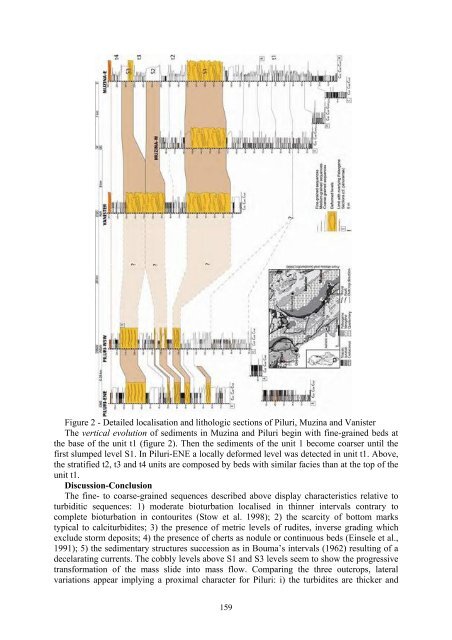DYNAMICS and ACTIVE PROCESSES - International Lithosphere ...
DYNAMICS and ACTIVE PROCESSES - International Lithosphere ...
DYNAMICS and ACTIVE PROCESSES - International Lithosphere ...
Create successful ePaper yourself
Turn your PDF publications into a flip-book with our unique Google optimized e-Paper software.
Figure 2 - Detailed localisation <strong>and</strong> lithologic sections of Piluri, Muzina <strong>and</strong> Vanister<br />
The vertical evolution of sediments in Muzina <strong>and</strong> Piluri begin with fine-grained beds at<br />
the base of the unit t1 (figure 2). Then the sediments of the unit 1 become coarser until the<br />
first slumped level S1. In Piluri-ENE a locally deformed level was detected in unit t1. Above,<br />
the stratified t2, t3 <strong>and</strong> t4 units are composed by beds with similar facies than at the top of the<br />
unit t1.<br />
Discussion-Conclusion<br />
The fine- to coarse-grained sequences described above display characteristics relative to<br />
turbiditic sequences: 1) moderate bioturbation localised in thinner intervals contrary to<br />
complete bioturbation in contourites (Stow et al. 1998); 2) the scarcity of bottom marks<br />
typical to calciturbidites; 3) the presence of metric levels of rudites, inverse grading which<br />
exclude storm deposits; 4) the presence of cherts as nodule or continuous beds (Einsele et al.,<br />
1991); 5) the sedimentary structures succession as in Bouma’s intervals (1962) resulting of a<br />
decelarating currents. The cobbly levels above S1 <strong>and</strong> S3 levels seem to show the progressive<br />
transformation of the mass slide into mass flow. Comparing the three outcrops, lateral<br />
variations appear implying a proximal character for Piluri: i) the turbidites are thicker <strong>and</strong><br />
159




